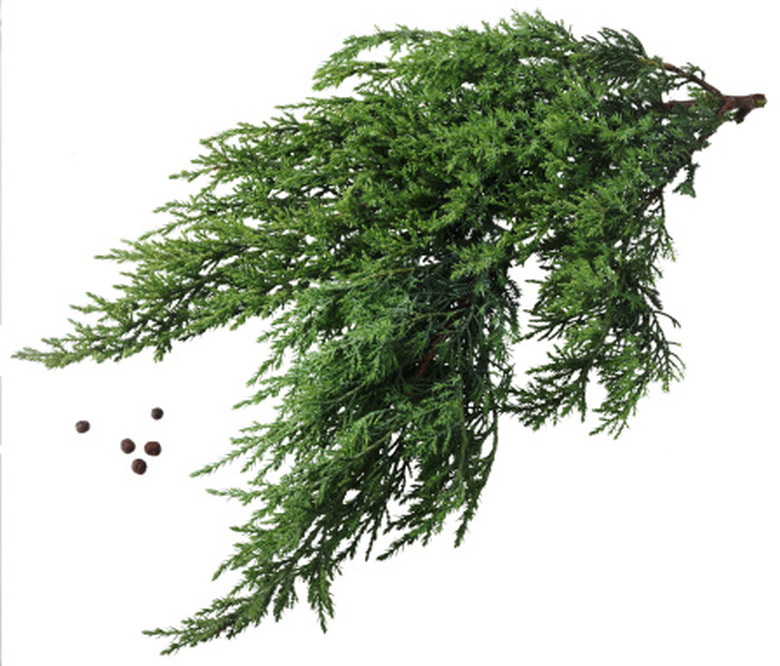Is A Juniper A Cedar Tree?
Junipers are members of the Juniperus genus and the Cupressaceae or cypress family. About 60 known species of juniper are scattered around the world. Cedars are known botanically by the genus name Cedrus and are members of the Pinaceae or pine family. Junipers and cedars are evergreens.
Few True Cedars
The confusion between the two genera is due to the common names of some species. According to "Hortus Third," there are about 35 shrubs and trees with the word "cedar" in their common names. Only three of them are actually classified in the genus Cedrus.
- Junipers are members of the Juniperus genus and the Cupressaceae or cypress family.
- Only three of them are actually classified in the genus Cedrus.
Junipers Called Cedar
At least six juniper species have "cedar" as part of their common names. Those six are: Bermuda cedar (Juniperous bermudiana), Colorado red cedar (Juniperous scopulorum), creeping cedar (Juniperous horizontalis), Ozark white cedar (Juniperous ashei), Eastern red cedar (Juniperous virginiana) and Southern red cedar (Juniperous silicicola).
Uses
Junipers and cedars are both exceptionally useful plants, with many landscape applications. One juniper species, Juniperous communis, is also used for culinary purposes, most notably as a flavoring for gin. Cedar is noted for the fragrance of the wood and for its resistance to rot.
Cedar Tree
For cedar trees to grow robust, they need to be planted a certain way and given room to thrive. Seedlings should be placed 5 feet apart from one another to allow enough room. A 2- to 3-inch thick layer of organic mulch helps cedars retain moisture and protects their trunks. Cedar leaves make a snack for various animals, who may kill young trees with too much nibbling. Hungry rabbits will eat cedar leaves from autumn to early spring, so protect against these and other pests by encircling young cedars with chicken wire. Once they've matured and outgrown the wire, they'll be able to withstand moderate grazing without a problem. Both diseases cause sunken lesions on infected trees, though the sores are not always clearly visible. Cedars with canker may also have yellow, wilted foliage.
- At least six juniper species have "cedar" as part of their common names.
- Cedar leaves make a snack for various animals, who may kill young trees with too much nibbling.
References
- "Hortus Third"; Liberty Hyde Bailey, Zoe Esther Bailey, et al.; 1976
- "The Botanical Garden"; Roger Phillips and Martyn Rix; 2002
- Cedars for the AU Sable: Planting and Care of Cedar Trees
- Yardener: Caring for Cedar
- Yardener: Building Soil Under Trees
- University of California Davis: Cedar — Cedrus spp.
- University of California Davis: Canker Diseases
